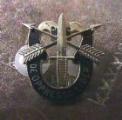Howdy-
Much balyhoo has been made in recent days about the upcoming QDR and the change in strategy to drop 2 Major Regional Contingencies (MRC) sized force and instead go to hybrid war.
http://www.nytimes.com/2009/06/23/wo...html?ref=world
While not explicitly stated as a 1 MRC force size, the new strategy has been used in recent debate as justification for buying less F-22s, recently by the USAF Chief of Staff in a speech at Elmendorf AFB:
http://www.elmendorf.af.mil/news/story.asp?id=123157910
The question then becomes how we fulfill our commitments to allies in multiple theaters with a 1 MRC force?
In other words, will our allies (and our enemies) still see our promises as being credible if our forces can be tied up by just one conflict?
We have treaties with the NATO countries, Japan, South Korea, ANZUS... and commitments in the Persian Gulf as well as in Afghanistan. While clearly our nuclear capability is one of the most important parts of these promises, are they alone enough to make our commitments credible?
It seems that we need to have the capability to have a credible conventional deterrent in multiple theaters, otherwise we end up potentially constraining ourselves as we did in the late '50s when there weren't many options between small interventions and massive nuclear attacks...
While small wars and interventions need to be a part of our strategy, how they fit in with the other end of the spectrum seems to be the challenge to me. I'm curious to hear your opinions on the strategy change...













Bookmarks